Five Fits With: Menswear Insider and Renaissance Man Josh Peskowitz

If you’re into men’s fashion or street style, you probably know the name Josh Peskowitz. When I was in college, I scoured Tumblr for style pics. I saw a crop of the same guys often, and when I really liked someone’s style, I committed their name to memory. Josh was one of those guys. When I started shooting my own street style photography, I crossed his path as we had mutual friends. I don’t remember who we met through, or what our first conversation was like, but from that first moment on, he was always kind to me. He’d stop outside a show to let me snap him and have a quick word, and that was before I knew him well.
Josh has had an incredible career, and though he would give you a modest answer if you asked, the reason he’s ascended is certainly thanks to his personality, but more importantly, his taste and his work ethic. He’s worked at serious stores and publications—including, a while back, Esquire—but unfortunate bugs of the fashion industry include shuttering and lay-offs. He’s been victim to those, but each time, he’s risen from the ashes. If you are unfamiliar with Josh, just Google his name and take a look through the photos that pop up. You’ll see style, but more importantly, you’ll see comfort. I’ve talked about this just about anywhere they’ll let me, but comfort is my number one style metric. Without it, you really can’t look good.
I could continue to rant about Josh’s importance, but instead, I’ll let the photos and interview below do the talking. We talked about his career, the decisions required to own a store, the flaws of America and the fashion system at large, and how to pack clothes for a long trip.
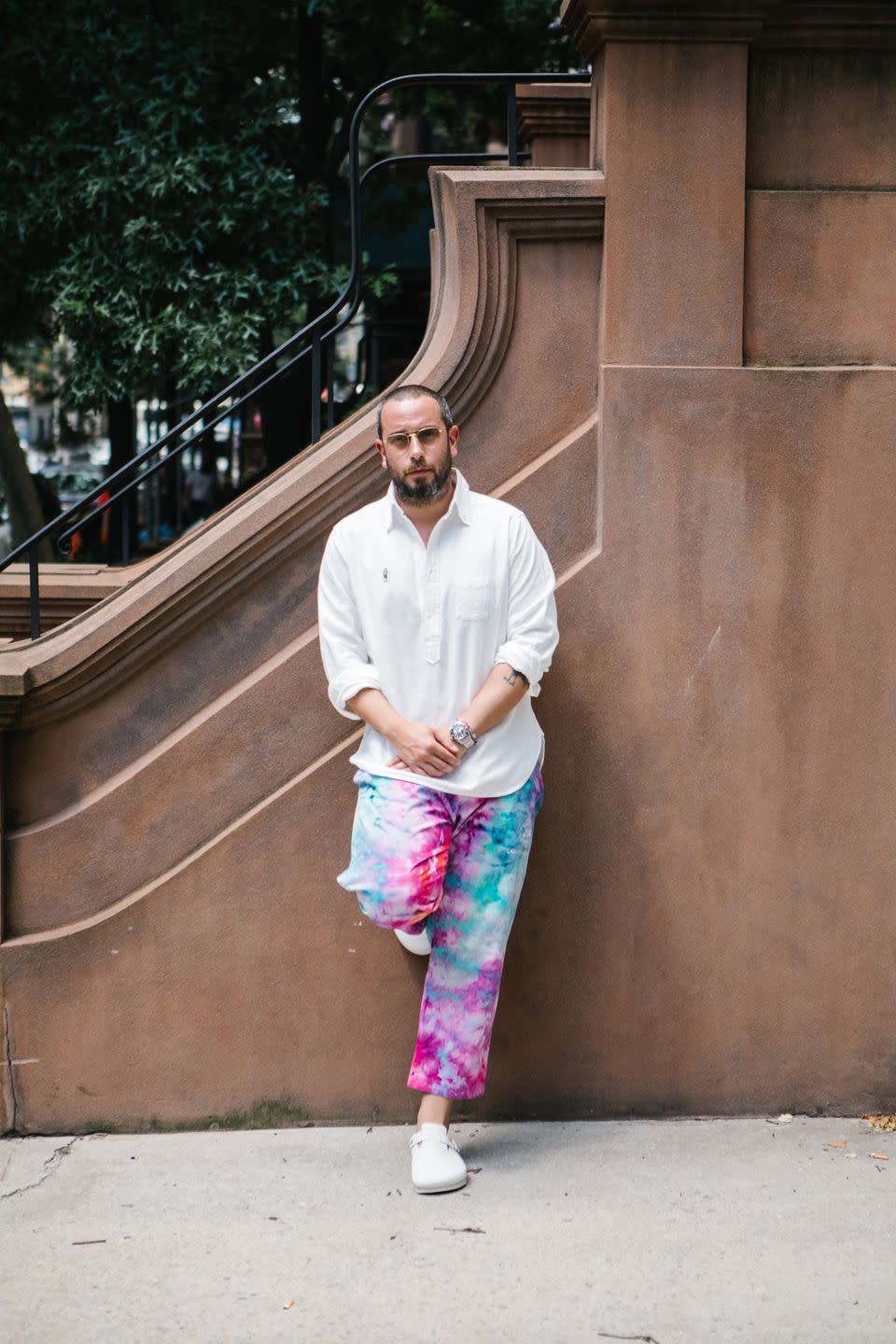
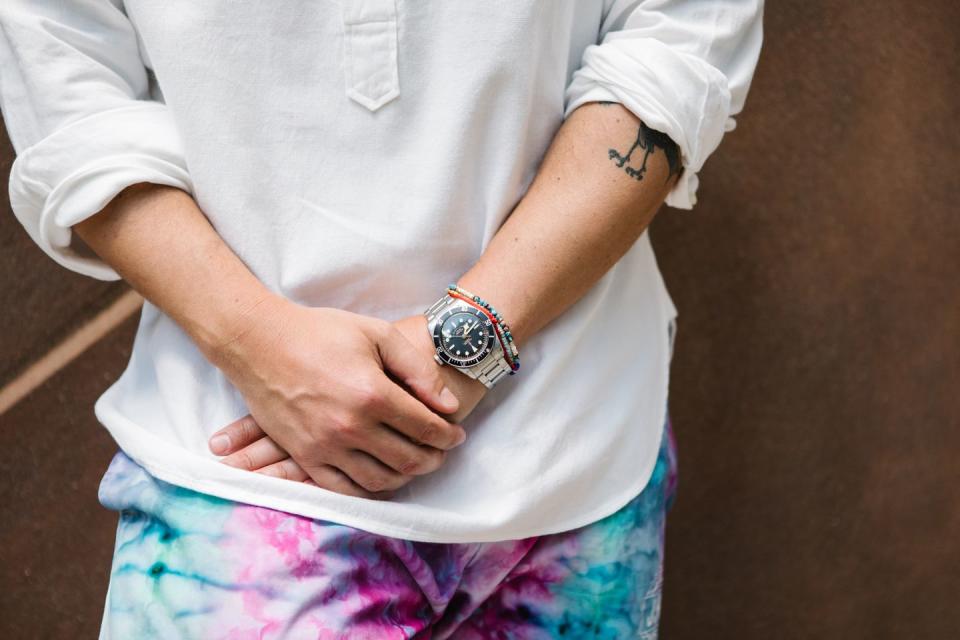
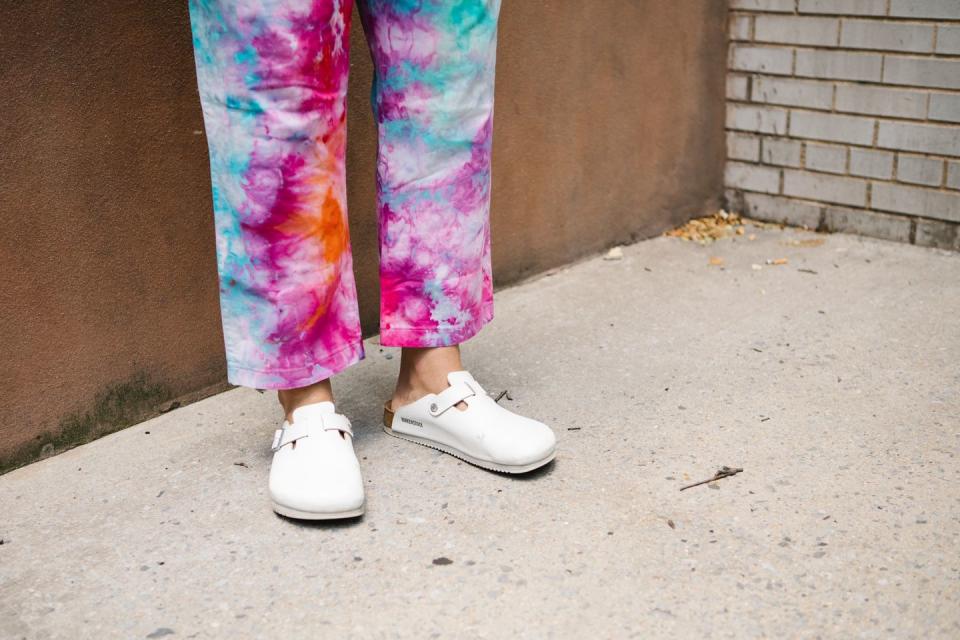
You’ve worked at many important menswear companies and publications. Can you give me a bit of your personal background, and your journey through the fashion and menswear landscape?
I’ve been working in men’s clothing since I was 16. I’ve basically only ever had two jobs outside of fashion—one my freshman year of high school as a bagel baker and one as an apprentice sushi chef in college. I guess my career really started at The Fader (an independent music and culture magazine) where I was the fashion coordinator and then editor. It was a heady time in downtown New York music (late 2001 until late 2004) and we shot a lot of the luminaries of music today when they were just starting out. It was a small team so we all wore a lot of hats. I started writing there and styled my first shoots on my own. The team and contributors I worked with there have gone on to do some really amazing stuff and I’m happy to still call many of them friends. From there I worked briefly at Stuff Magazine, then Cargo Magazine, after that I did my first of two stints at Esquire, working on the Big Black Book’s first edition. I’ve also worked at Vibe and contributed to the international editions of GQ, V Man, and written a little bit for the New York Times.
Besides my time at Esquire, probably the most influential job I had in media was as Fashion Editor for Men.Style.com. I not only worked as a critic for the fashion shows, but really got to witness and participate in the first stages of men’s fashion internet culture, so I again found myself in the middle of a heady time period. I went into retail with Gilt Groupe under the auspices of creating a new website and platform for them that eventually came to be called Park & Bond. From there I went on to be the Fashion Director of Bloomingdale’s, which I eventually left start my own store in L.A. called Magasin. The through thread is that I’ve worked for extraordinarily talented people and learned as much from them as possible. I really believe that working for others you respect and helping realize their visions is one of the best ways to develop an informed point of view for yourself.
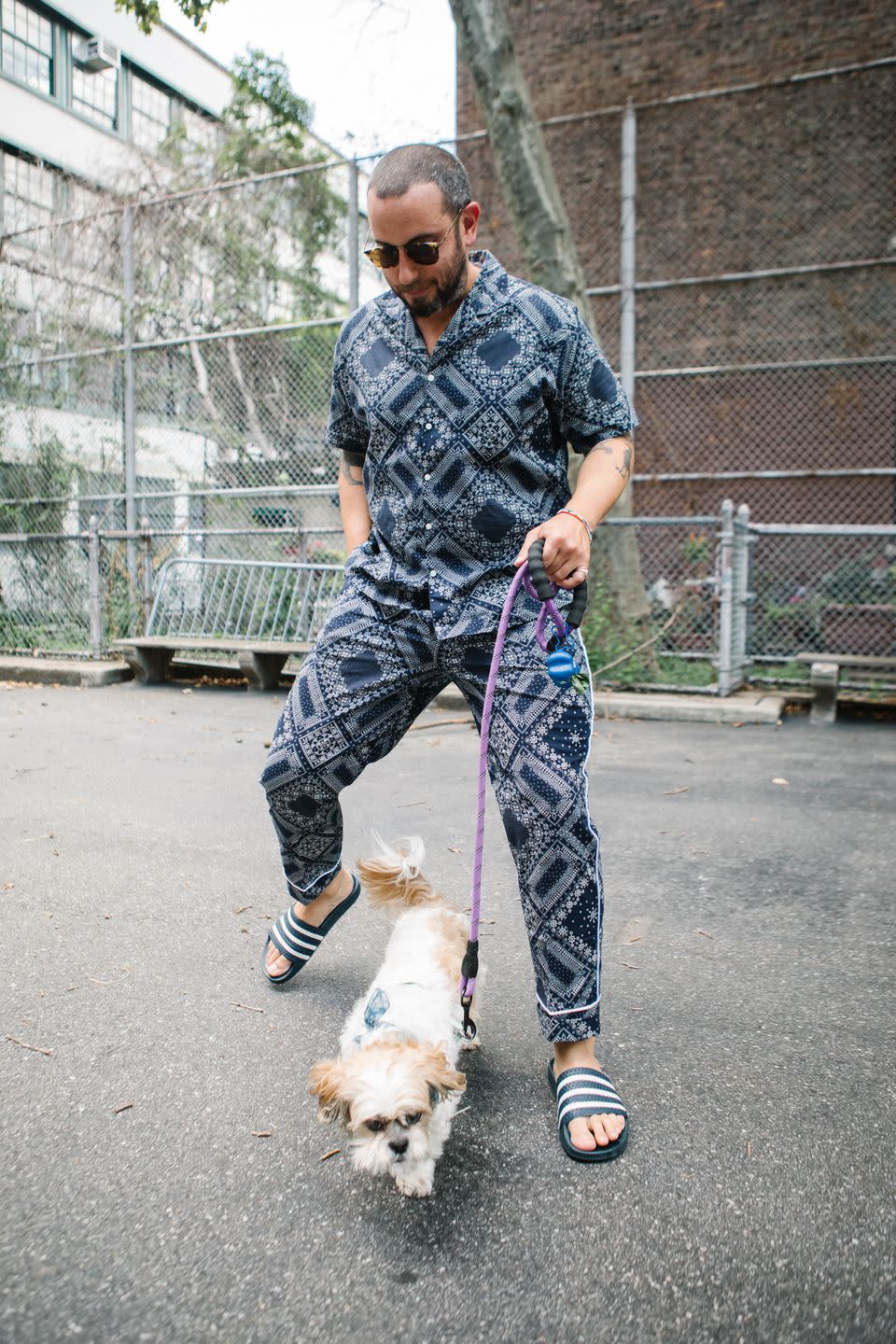
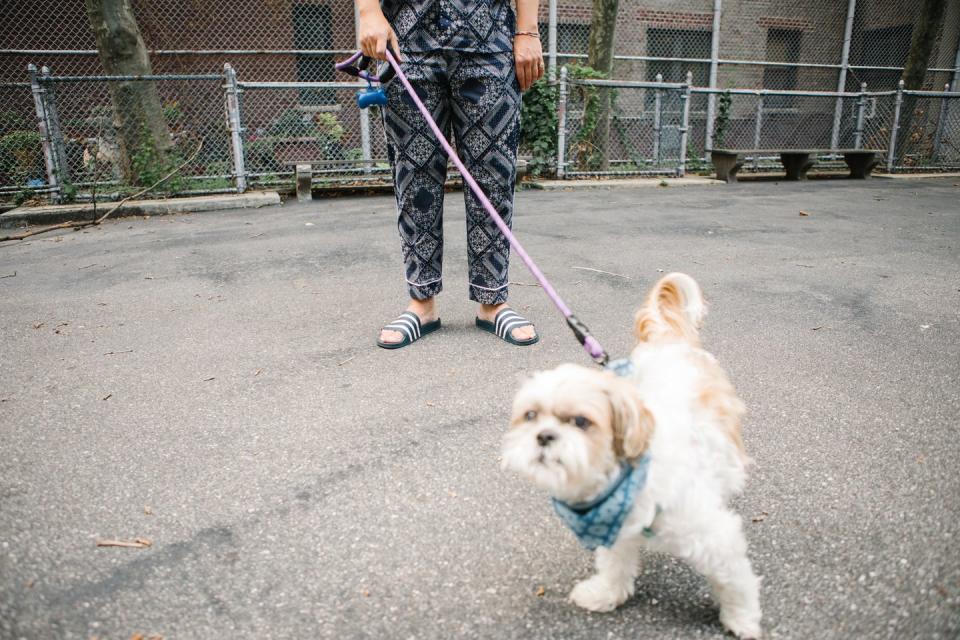
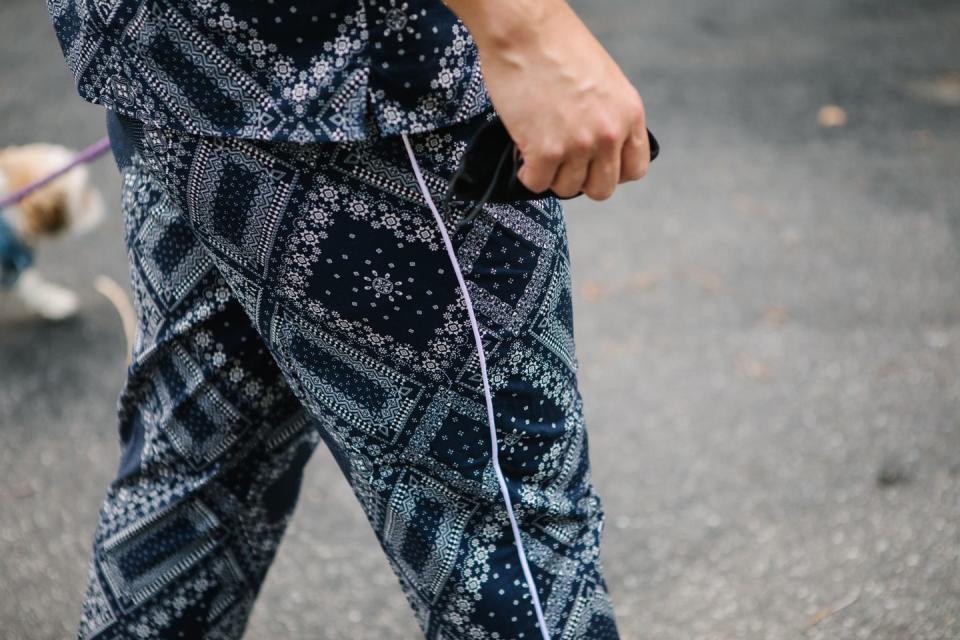
Why did you decide to open your own shop? Looking back, is there anything you would have done differently?
We founded Magasin to celebrate the principals that myself and my partners believe in when it comes to clothing. First, it should last a long time and help you to develop a personal style. Second, craftsmanship, innovation, and rarity are what give clothing value. We thought big designer houses had merit, but not more so than independent and up-and-coming manufacturers. And third, when buying clothing, you should be paying for parts and labor—the skills and the materials—not a marketing budget. We didn’t want to play the “seasonality” game and we certainly didn’t want to stick to a markdown calendar, so many of the things we sold were hard to get or made exclusively for us. I also merchandised the store based on narrative and feeling, rather than grouping brands together, which was an approach I admired in many of my favorite stores in Japan. These principals are what the entire fashion establishment is talking about now. I’m sad it took a pandemic and a depression, but I’m glad that’s the conversation.
Was Magasin too early? Maybe. Was it in the right place? Probably not. Was the principle sound? One hundred percent. It’s going to be a tough few years for independent retail, but I think that desire for something unique will be that much stronger after we go through the period of consolidation and closures in multi-brand retail that we are seeing now. Many malls will close and the shopping areas of cities will feel like malls used to—with all the same stores. This process started well before Covid, but I think the mind-boggling pace of it will make people yearn for and support independent businesses. The pendulum always swings.
Unfortunately, the operation you’ve been spearheading at Moda Operandi Mens has just shuttered. This is no doubt a dark period for retail and fashion as the economy buckles under the weight of a failing system. What have you been up to this summer (on a personal level), and what’s next for you for the remainder of the year?
I only recently finished my time at Moda; winding down the business in an honorable way for both the vendor community and our customers took time. I think we were able to accomplish that and have moved on. Typically, if I were going to pick a time to be between jobs, the summer would be it, but nothing is typical about this year. I’m also not good at being idle, so I’m working on a number of consulting projects that I can’t speak on yet, and formulating longer-term plans. I am also reaching grandma level with my cooking. And trying to work out as much as possible to counteract the grandma-level cooking.
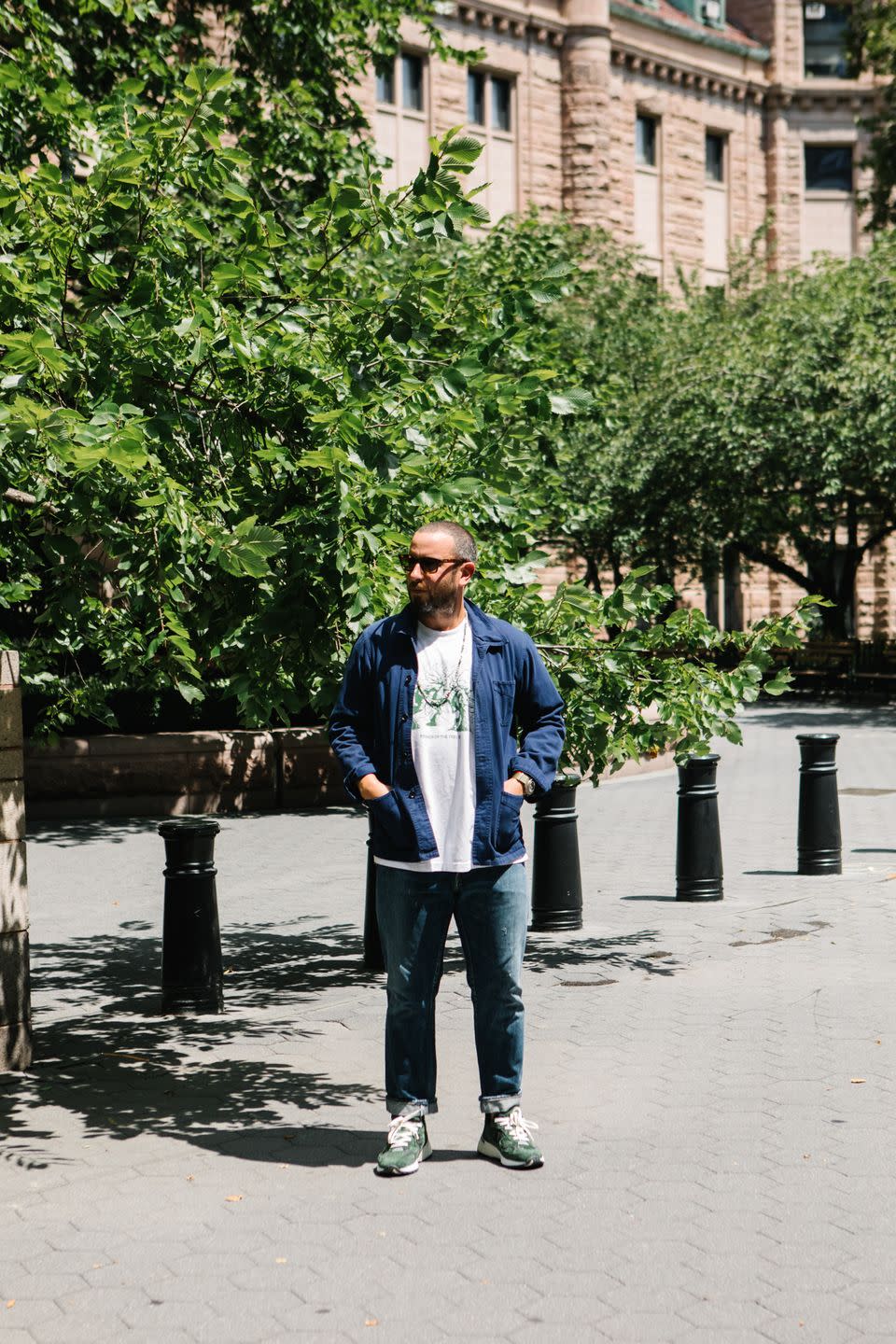
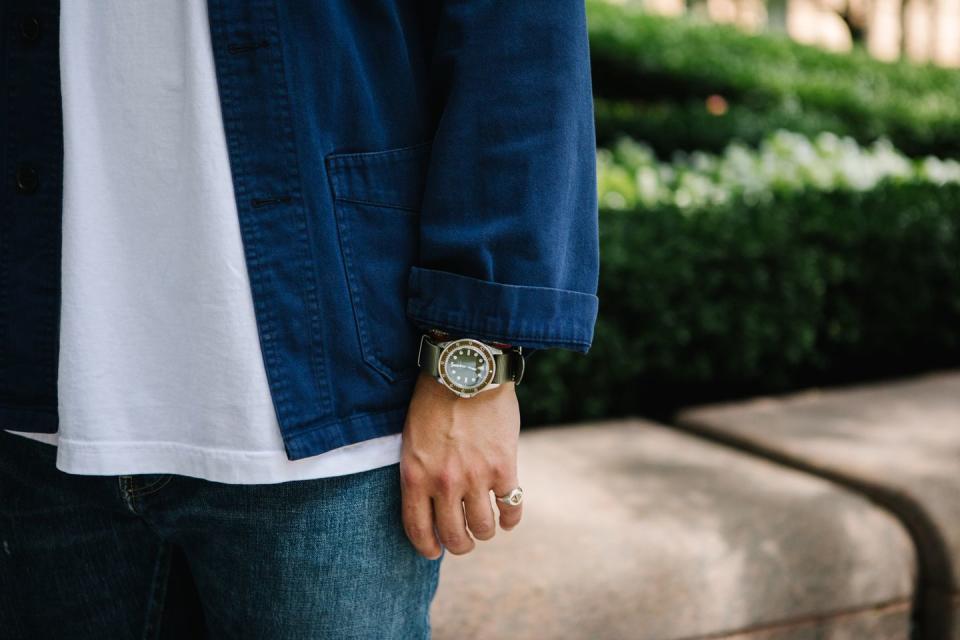
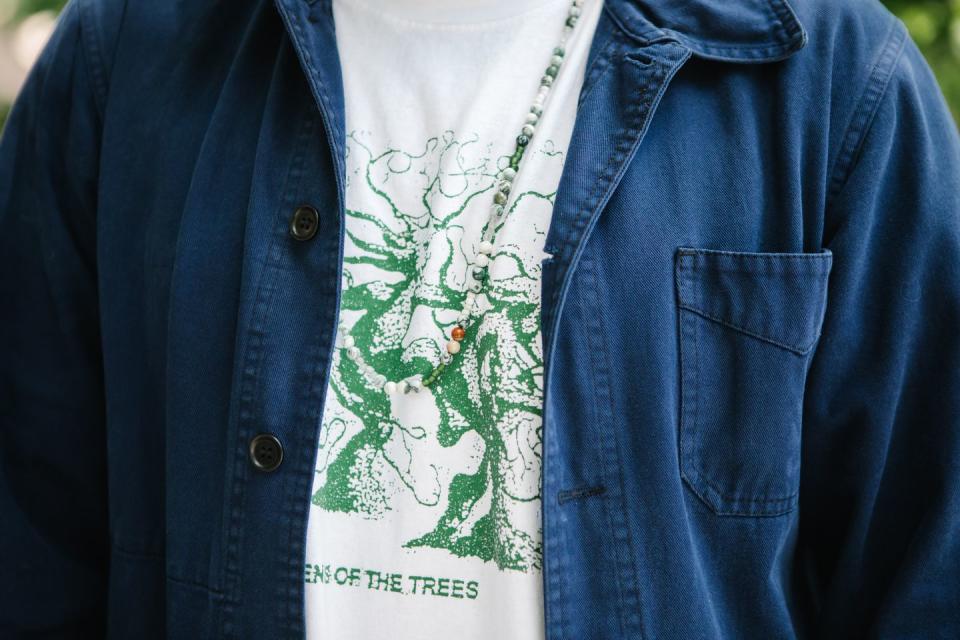

I know storytelling and authenticity have always been huge components of your work. Talk to me about your favorite brands or stores. Give me some storied names that have done it right in perpetuity, and give me some new names that are exciting you.
There’s too many to list! Someone recently asked me who my favorite designer of all time is and I had to say Dries Van Noten. In every category and every collection, he does something new but remains resolutely himself. Plenty of people would pick someone else as their favorite but no one can deny the genius of Dries. I have huge respect for Rei Kawakubo and the whole world she’s built. I wouldn’t be in fashion if it weren’t for Polo Sport sweatpants (and me needing a discount) so Ralph Lauren will always be close to my heart. Yohji Yamamoto, Miuccia Prada, Veronique Nachan of Hermès. In terms of people who only have two or so decades under their belt: Kim Jones, Hiroki Nakamura of Visvim, Brendon Babenzien of Noah, Massimo Alba, Yuki Matsuda of Monitaly and Yuketen, and Daiki Suzuki of Engineered Garments.
For stores that I like to shop: Union Los Angeles; RTH, also in Los Angeles; Nepenthes in NYC; Garden and Ware-More-Ku in Tokyo; DelStore in Hong Kong; Lapstone & Hammer in Philly; Husbands in Paris; Paul Stuart in NYC; and Eral 55, in Milan. And in terms of younger brands that I’m excited about: Nicholas Daley, 4S Designs by Angelo Urrutia, 18 East, TOO GOOD, Stoffa, Story Mfg, Bode, Blurhms, Kenneth Ize, and Frederico Curradi. I’m sure I’m missing a bunch.
Your style is widely regarded and documented and for the first time in years, you’re not headed to Europe for the fashion circuit. I know you always dress how you dress, but do you have any pieces on ice for the next trip out? Do you have any tips on packing clothes for trips?
The only things I have on ice are shoes—like the Lapstone & Hammer Sauconys—and stuff I haven’t gotten around to tailoring because I’m not going anywhere. I have a Mountain Research chore coat, Jil Sander coveralls, and a Yohji Yamamoto suit in that category. Packing and traveling are no doubt going to be very different in the years to come, but I do have two basic strategies. One is for fashion weeks, which is take all my favorite stuff, subtract one third of the extra crazy stuff, and then add in staples that are in complimentary colors to what’s left. I roll everything that goes into the suitcase, and that makes more stuff fit. For any other time, I just pick one color for packing and go from there. Usually all navy and white, or khaki and olive. That way you get more combos out of a small amount of stuff.
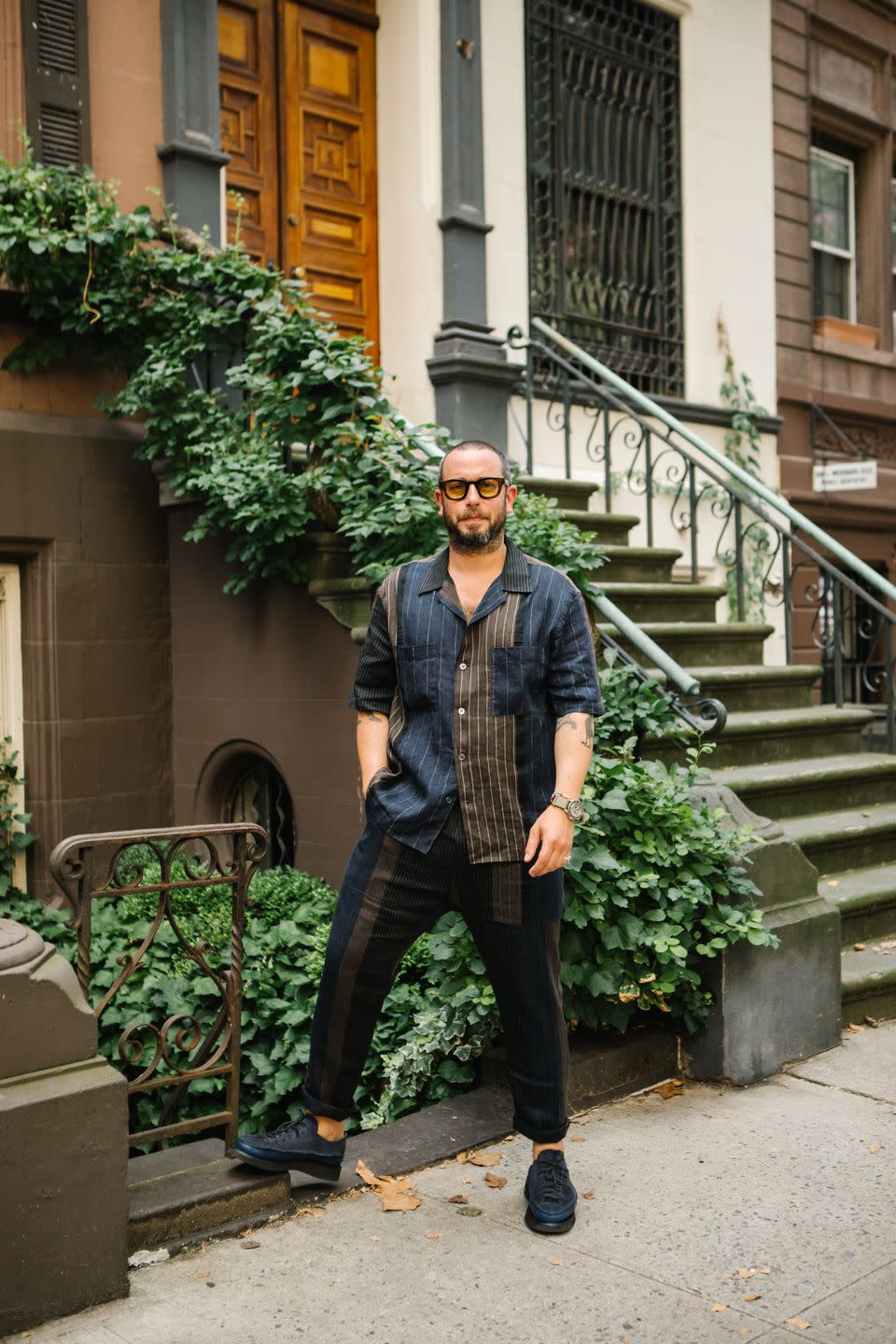
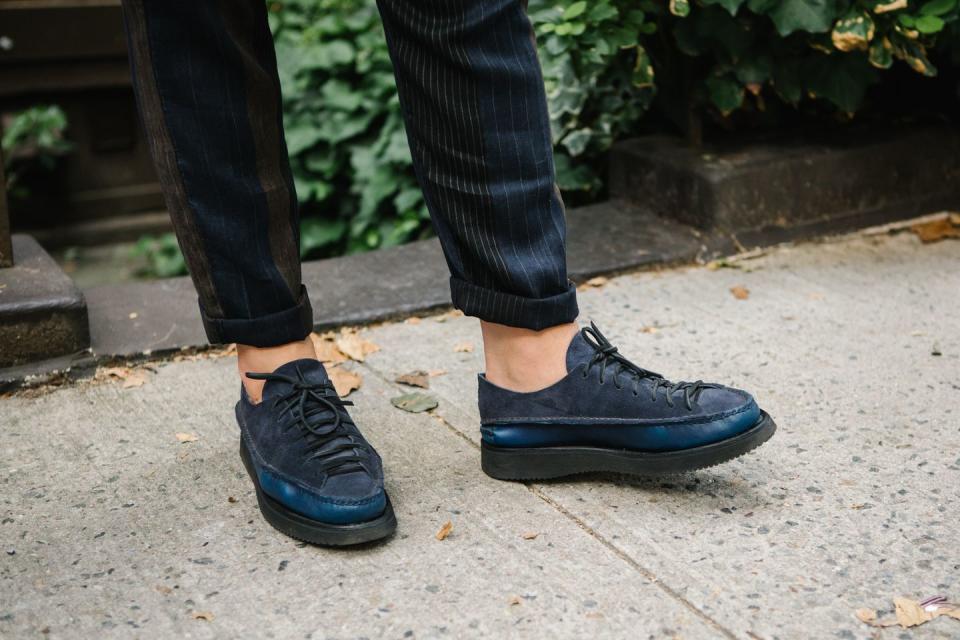
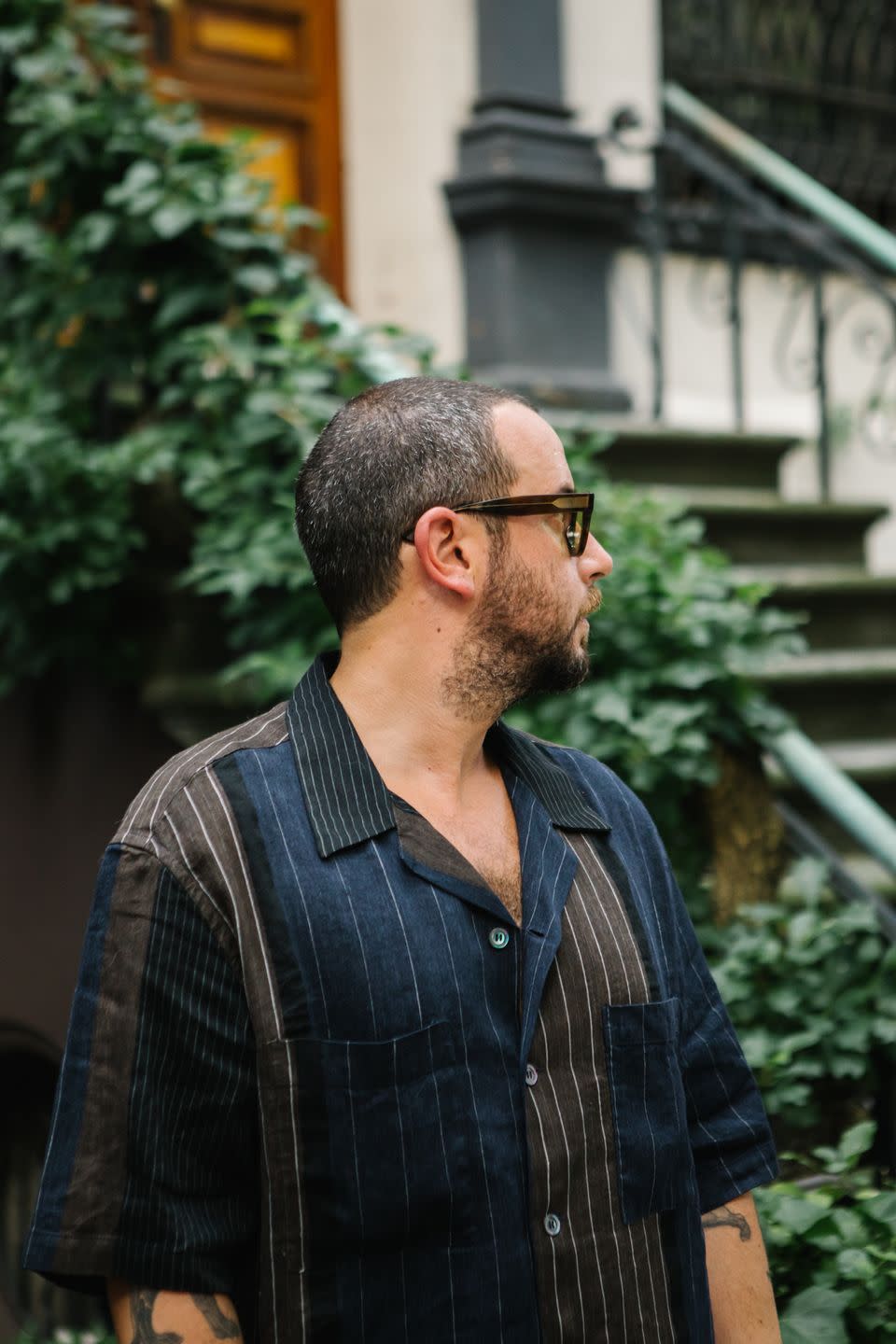
What do you think the fashion industry, and particularly the men’s space, is doing incorrectly right now? What do you think it’s doing well? Do you have any opinions about the American fashion industry?
The problems of the fashion industry are myriad and long in the telling, so I won’t get too specific, but the main problem is that the industry produces way more shit than anyone needs, and most of them do it in regions of the world with lax environmental and civil rights standards. Whether the end consumer pays for it or not, clothes cost more than anyone realizes, and if they did realize, they would not treat it as frivolous purchases. The industry touches the working lives of one in six humans, is the third largest polluter and is essential to 99.999 percent of people on earth. Clothing is important. It is how we express ourselves and define ourselves. Humans don’t have feathers or fur to display or camouflage to hide: We make it ourselves, and that should be celebrated and valued appropriately.
The people who make good clothes are artisans and the people finding new, more responsible ways of manufacturing should be supported. People have been taught to treat clothes as disposable by rampant discounting, fast fashion, and social media. Hopefully we will get back to a place where people buy clothes because they love and identify with them—and they serve a purpose other than a dopamine hit from likes on Instagram. I mean, get the dopamine hit but then keep the gear!
The whole industry is hurting in the States more than Europe because we have an unresponsive, inept and criminal administration letting our entire way of life languish while claiming they are trying to save it. Again, too much to get into here, but the government has never supported our industry the way it does in France or Italy. American fashion excelled at the middle ground, which made it accessible to a middle class that is now shrinking. The entire industry in this country needs a reboot, but there are exciting designers out there. Half of the people I said I was excited about are from here, and there are so many more I didn’t mention. As the industry shifts from growth, which is unsustainable, to profitability, which is, I think we will see a smaller, weirder, nicer fashion industry and I am here for it.
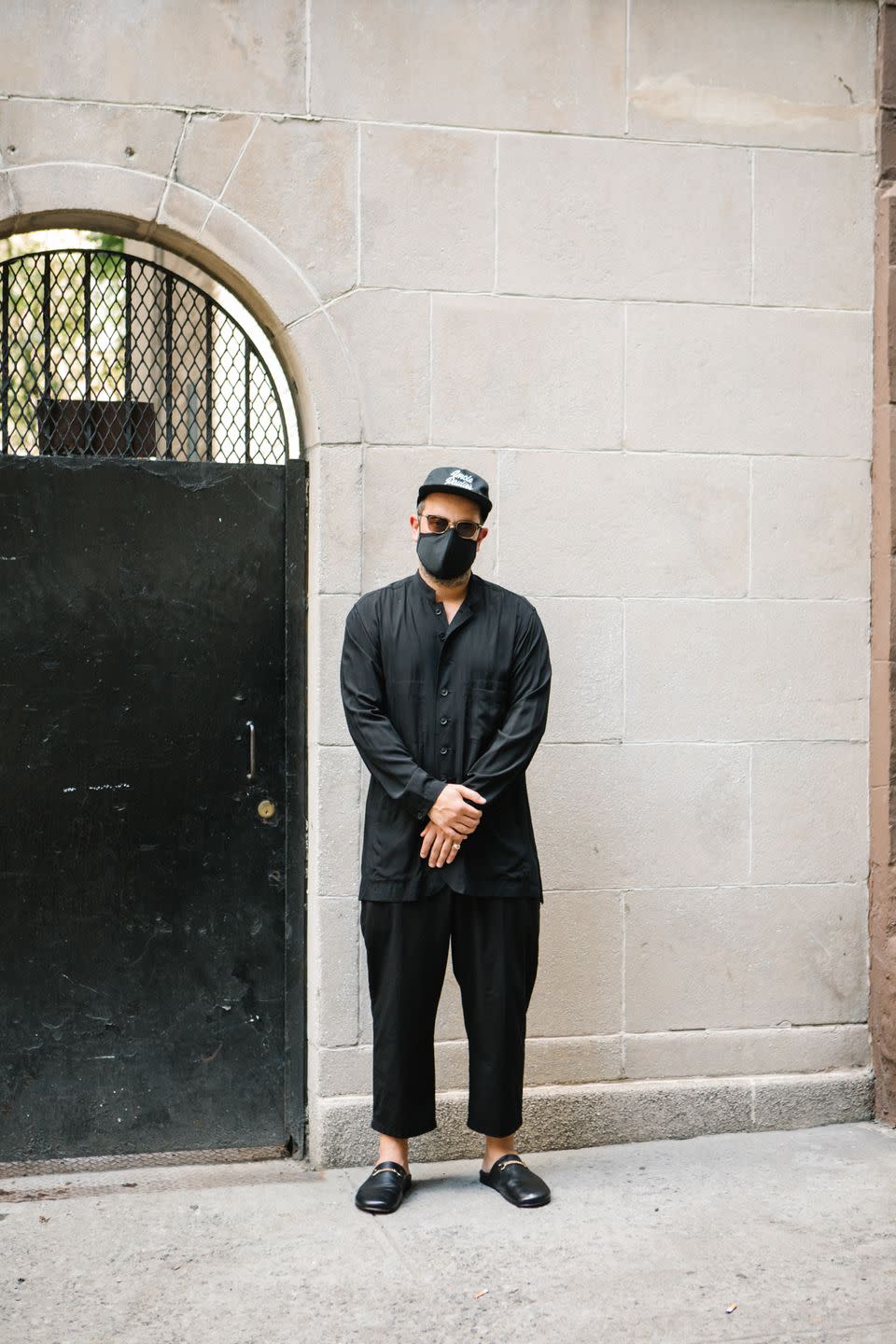
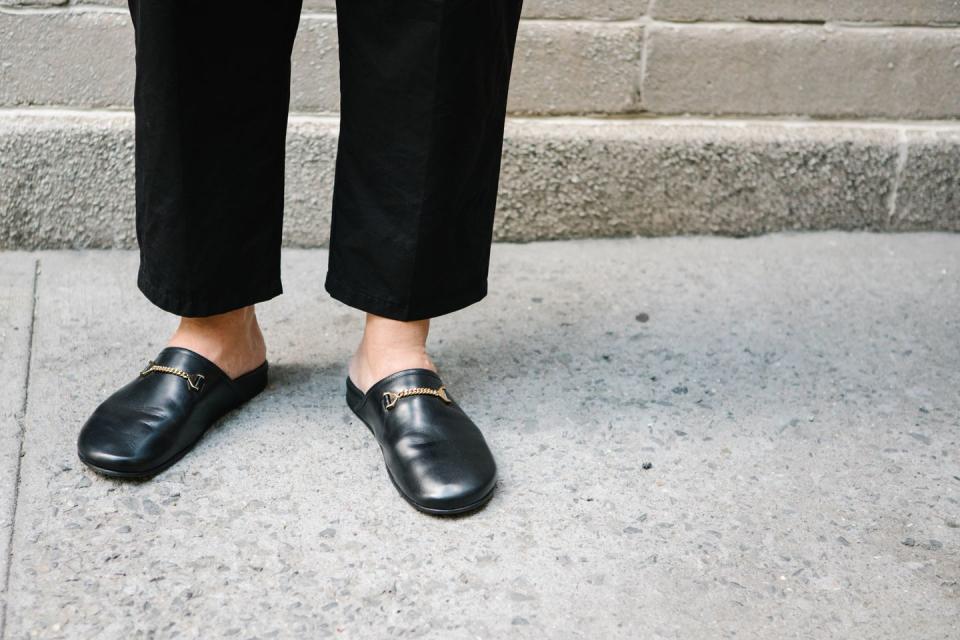
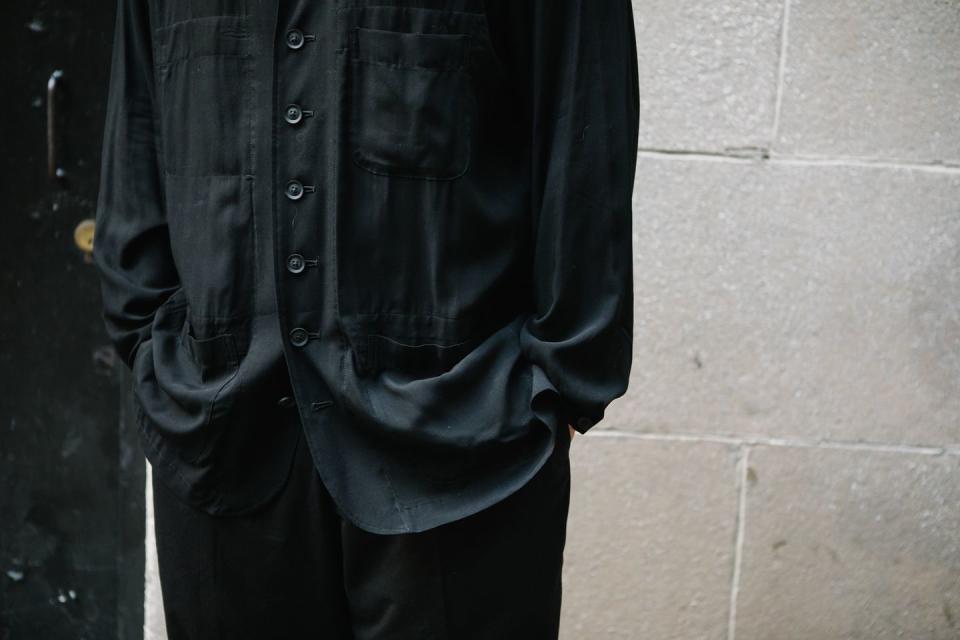
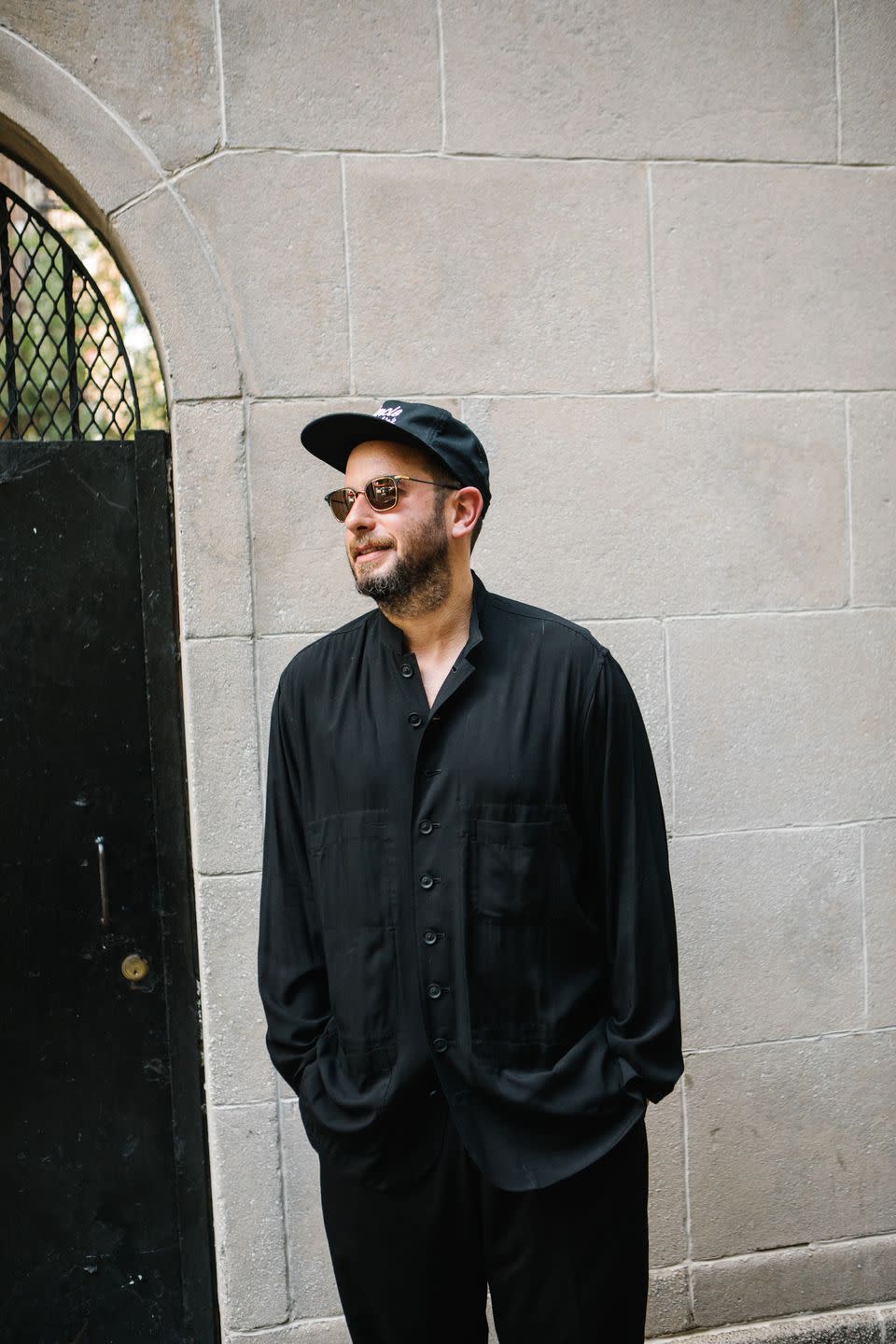
Has your personal style changed much over the years? What’s stayed consistent for you? What do you think are some essential pieces to start with when building a wardrobe?
There’s still stuff I wear that I bought in high School, like old Polo and Stüssy, and I have had Clark’s Wallabees in the rotation since I was 16. I’ve always been attracted to pattern and color, and the era that I grew up in relied heavily on army surplus and workwear—things that still matter to me to this day. When I got into tailored clothing—thanks to [Esquire Creative Director] Nick Sullivan—I saw the way that those things from my teenage years could be incorporated into a more tailored way of dressing. What’s stayed consistent about my style is that I’ve always been attracted to authentic things, and mixing them with other things that might seem wildly different but have the same spirit.
It’s evolved over the years—pieces come in and pieces go out—but I think I’ve stayed in the same plot-line for a long time now. That’s how I look at building a wardrobe. It’s your story, so don’t be afraid to tell it.
You Might Also Like

